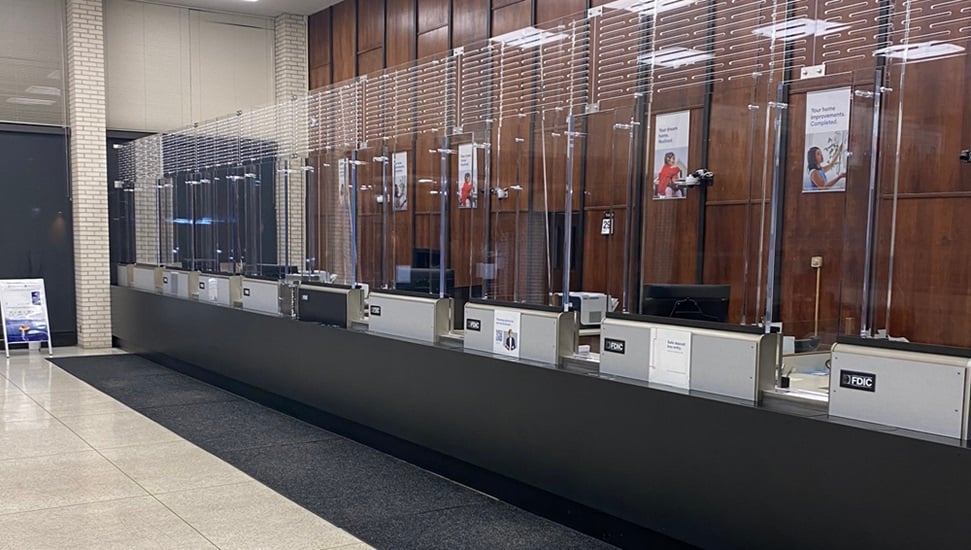So, you want to improve safety at your bank. Ballistic bank teller windows are a tried-and-true solution and a great place to start. Teller windows protect staff, deter robbers, and look great in your lobby…when designed correctly. In this blog, we outline how bank teller windows keep staff safe.
Handguns are the Most Commonly-Used Firearms in Bank Robberies
According to the FBI, in 2021 the most commonly used weapon used in bank robberies was a handgun. A firearm was involved in 232 of 1,162 incidents; a handgun was the weapon of choice 94% of the time.
The area of the bank that’s most frequently involved in a robbery was the front counter. This makes protecting bank staff from handgun fire imperative.
Ballistic Bank Teller Windows Keep Banks and Staff Safe
A practical solution to prevent robbery attempts is a ballistic bank teller window. Also called bandit barriers, the National Credit Union Administration recommends this security measure because of its effectiveness in preventing “counter jumpers” from gaining behind-the-counter access and general discouragement of robbery attempts.
Bank teller windows are clear pieces of ballistic glass that sit on the counter, between the bank staff and guests. Functional elements make the bank teller windows look and feel as though nothing was there at all.
Most of the transaction windows we design include features like:
Bulletproof countertops add an extra layer of safety and peace of mind. In the terrible event that bank staff might need to duck and cover, lining the front counter with bulletproof fiberglass protects them from any gunfire.
What Level of Protection Does My Bank Need?
Many bank managers, understandably, want the highest level of security for their facility. However, because rifle fire is so rare in banks, we typically recommend banks build their barriers using UL Levels 1, 2, or 3. These levels are tested to stop shots from common handguns:
- UL Level 1 is tested to stop three shots from a 9mm pistol
- UL Level 2 is tested to stop three shots from a .357 Magnum pistol
- UL Level 3 is tested to stop three shots from a .44 Magnum pistol
- UL Levels 4 and up are tested to resist gunfire from rifles. In our experience, banks that choose UL Levels 1, 2, or 3 are very happy with their level of protection (not to mention that lower levels tend to be more budget-friendly).
Modern Bank Teller Windows and Transaction Lines Increase Safety and Functionality
Where ballistic barriers of the past were thick, ugly, and made the bank interior feel unsafe. Today, we design elegant bulletproof bank teller windows that blend in with the bank lobby environment. Plus, customers often barely notice the barrier due to a high level of optical clarity.
If your bank is historically significant or includes features that cannot be altered during construction, that doesn’t prevent you from adding ballistic protection. Our engineering and design team have a tremendous amount of experience creating barriers that don’t permanently alter things like wainscoting, plaster walls, or marble countertops. It’s a specialty that we’re proud of—and we’re ready to put our expertise to work on your behalf.
Protect Your Bank with Ballistic Bank Teller Windows From TSS
At TSS, we have decades of experience helping banks across the country stay safe from armed robberies. Our bandit barriers and bank transaction windows deter potential threats and protect during dangerous events. We’re proud of the work we do and are ready to speak with you about your security needs today. Our experienced ballistics experts can help you determine your threat level, design a barrier, and plan for installation. We make the entire process easy; to get started, send us a message or request a quote.

